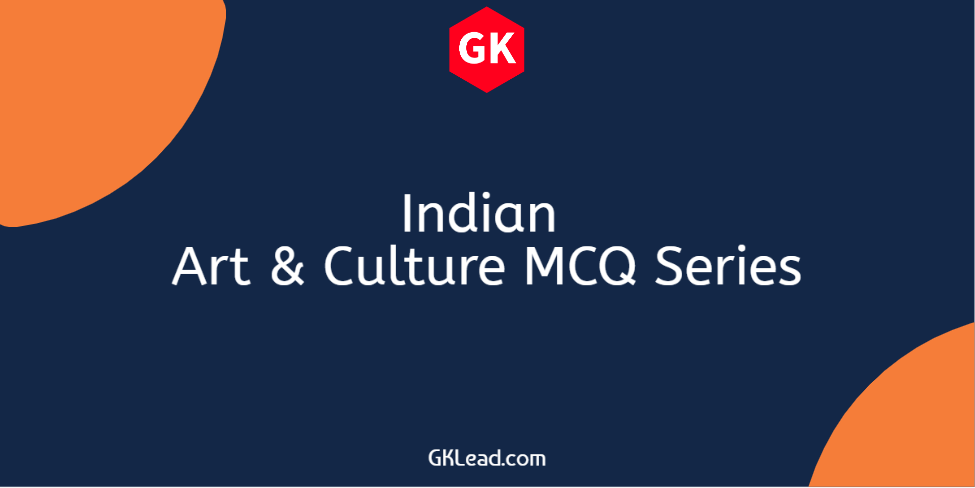Indian Art & Culture MCQ Set-1
Vedic Period MCQ for competitive examinations in India such as UPSC, SSC CGL, SSC CHSL, NDA, State PSC, Police recruitment and various government job recruitment examination by the Government of India, PSUs and the state Governments in India.
Q.1 Which among the following orthodox school of Indian philosophy is a rationalism school with atheistic themes?
A. Vedanta
B. Samkhya
C. Nyaya
D. Vaisheshika
Answer: B. Samkhya
Note: The Samkhya school of Indian Philosophy accepts proofs as a reliable source of gaining knowledge based on perception, inference, and word/testimony of reliable sources.
Q.2 The Battle of Ten Kings is described in which of the following Veda?
A. Rig Veda
B. Yajur Veda
C. Sama Veda
D. Arthava Veda
Answer: A. Rig Veda
Note: The Battle of the Ten Kings is a battle, first alluded to in the Book 7 of the Rigveda. As per Rig Veda the battle took place between a Bharata king and a confederation of tribes. It resulted in a decisive victory for the Bharatas and subsequent formation of the Kuru polity.
Q.3 Which among the following is CORRECT about the Nyaya, an orthodox school of Indian Philosophy?
I. It accepts three out of six pramanas (proofs) as reliable source of gaining knowledge
II. It is realism school emphasized on analytics and logic
III. It holds that human sufferings produced under activity of wrong knowledge or ignorance
A. Only I
B. Only II
C. Both I & II
D. Both II & III
Answer: D. Both II & III
Note: Nyaya school accepts four out of six pramanas (proofs) as reliable source of gaining knowledge. The pramanas are (Pratyaksa) perception, (Anumna) inference, (Upamana) comparison & analogy and (Sabda) word, testimony of past or present reliable experts. Whereas, the Samkhya school three out of six pramanas as reliable source of gaining knowledge. The pramanas for Samkhya school are perception, inference, word, testimony of past or present reliable experts.
Q.4 Which among the following orthodox school of India philosophy is described as “Samkhya school with God”?
A. Nyaya
B. Vedanta
C. Yoga
D. Vaisheshika
Answer: C. Yoga
Note: Yoga school is closely related to the Samkhya school of Indian Philosophy. However, the Yoga school allows the concept of God. The term Yoga is interchangeably used as Asana in the modern period. Adi Shankara, as well many modern academic scholars describe the Yoga school as “Samkya school with God.”
Q.5 Who among the following equated Raja Yoga with Yoga school of Patanjali?
A. Swami Vivekananda
B. Sri Aurobindo
C. Baba Ramdev
D. Adi Shankara
Answer: A. Swami Vivekananda
Note: Bhagavad Gita describes four types of Yogas, viz Bhakti Yoga, Karma Yoga, Jnana Yoga and Raja Yoga and Raja Yoga is the highest form of Yoga.
Q.6 Which of the following is the earliest Vedic state?
A. Panchal Kingdom
B. Kuru Kingdom
C. Magadha Kingdom
D. None of these
Answer: B. Kuru Kingdom
Note: Kuru kingdom was a Vedic Indo-Aryan tribal union in northern Iron Age India and developed into the first recorded state-level society in the Indian subcontinent.
Q.7 The four “Varna” is mentioned in which of the following Sukta/Suktam of Rig Veda?
A. Purusha Sutka
B. Nadi Sutkam
C. Nasadiya Sutka
D. None of these
Answer: A. Purusha Sutka
Note: Purusha sukta is hymn 10.90 of the Rigveda, dedicated to the Purusha, the “Cosmic Being. Although the word “Varna” itself is not mentioned in the hymn, However, the Purusha sukta visualised the four varnas as hierarchical, but inter-related parts of an organic whole. In the hymn, the Brahmans are compared to the mouth, Kshatriya to the arms, Vaishya to the thigs and Sudra to the feet of the organic whole.
Q.8 The primary Rig Vedic concepts was employed in which of the following ancient kingdom of Syria?
A. Mitanni Kingdom
B. Sumerian Kingdom
C. Akkadians Kingdom
D. None of these
Answer: A. Mitanni Kingdom
Note: The oldest inscriptions in Old Indic was found in Northern Syria. The Mitanni kings took Old Indic throne names and Old Indic technical terms were used for horse-riding and chariot-driving. The Old Indic term r’ta, meaning “cosmic order and truth”, the central concept of the Rig Veda, was also employed in the Mitanni kingdom. Old Indic gods, including Indra, were also known in the Mitanni kingdom.
Q.9 Which of the following Upanishad is embedded inside the last section of the Samaveda?
A. Isha Upanishad
B. Kena Upanishad
C. Taittiriya Upanishad
D. Chandogya Upanishad
Answer: B. Kena Upanishad
Note: The Kena Upanishad is a Vedic Sanskrit text classified as one of the primary or Mukhya Upanishads that is embedded inside the last section of the Talavakara Brahmanam of the Samaveda.
Q.10 The primary ethics in the Vedas were based on:
A. Satya and R’ta
B. Satya and Soma
C. Satya and Ahimsa
D. None of these
Answer: A. Satya and R’ta
Note: The English translation of the Vedic word “Satya” is loosely related to truth and in the Vedic religion, Ṛta is the principle of natural order which regulates and coordinates the operation of the universe and everything within it.
List of Indian Art & Culture MCQ sets from GKLead.com
- Indian Art & Culture MCQ Set-1
- Indian Art & Culture MCQ Set-2
- Indian Art & Culture MCQ Set-3
- Indian Art & Culture MCQ Set-4
- Indian Art & Culture MCQ Set-5
- Indian Art & Culture MCQ Set-6
- Indian Art & Culture MCQ Set-7
- Indian Art & Culture MCQ Set-8
- Indian Art & Culture MCQ Set-9
- Indian Art & Culture MCQ Set-10
- Indian Art & Culture MCQ Set-11
- Indian Art & Culture MCQ Set-12
- Indian Art & Culture MCQ Set-13
- Indian Art & Culture MCQ Set-14
- Indian Art & Culture MCQ Set-15
- Indian Art & Culture MCQ Set-16
- Indian Art & Culture MCQ Set-17
- Indian Art & Culture MCQ Set-18
- Indian Art & Culture MCQ Set-19
- Indian Art & Culture MCQ Set-20

